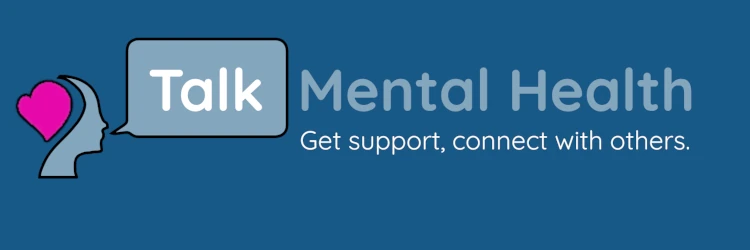
The Diagnostic and Statistical Manual of Mental Disorders-5 (DSM-5) has classified eating disorders into 7 different classes.
Eating disorders are a range of psychological conditions that cause severe and persistently abnormal eating behaviors. People who suffer from these disorders often associate deviating from their eating patterns with distressing thoughts and emotions.
Although eating disorders can affect people at any age, they are often seen in young people in their 20s or in teenagers. Societal pressure to look a certain way is often blamed as the cause, although genetic factors may also play a role.
Mental health professionals have classified eating disorders using fixed criteria. Below are common eating disorders according to the Diagnostic and Statistical Manual of Mental Disorders-5 (DSM-5):
- Anorexia nervosa (AN)
- Bulimia nervosa (BN)
- Binge eating disorder (BID)
- Pica
- Rumination disorder
- Avoidant/restrictive food intake disorder (ARFID)
- Unspecified feeding or eating disorder (UFED)
There can be more than one disorder with similar characteristics coexisting in one person. For example, someone can have both anorexia nervosa and body dysmorphic disorder at the same time.
What are symptoms of different eating disorders?
Anorexia nervosa (AN)
Anorexia nervosa is characterized by an intense fear of gaining weight or of becoming fat.
- Even though the person has a significantly low weight, they have a constant fear of putting on weight.
- Symptoms persist for at least 3 months at a time.
- The two subtypes of anorexia nervosa are
- Restricting anorexia nervosa: Weight loss is accomplished primarily through dieting, fasting, and excessive exercise.
- Binge-eating or purging anorexia nervosa: Weight loss is accomplished through reduced eating and episodes of self-induced vomiting or taking laxatives, diuretics (water pills), or enemas.
Bulimia nervosa (BN)
Bulimia nervosa is characterized by:
- A cycle of binge eating (eating an inappropriately large portion of food at once) and inappropriate compensatory behaviors (vomiting, water pills, excessive exercises).
- Symptoms appear at least once a week and last for at least 3 months.
- Based on the number of episodes a week, the disorder is classified as mild, moderate, or severe.
Binge eating disorder (BED)
- Binge eating disorder is when there are recurrent episodes of binge eating but without compensatory behaviors (such as vomiting, taking water pills, or excessive exercise). It is characterized by:
- Eating much more rapidly than normal.
- Eating until feeling uncomfortably full.
- Eating large amounts of food when not hungry.
- Eating alone because of embarrassment around eating habits.
- Feeling disgusted with oneself, depressed or guilty.
Pica
Pica is the persistent eating of nonnutritive, nonfood substances for at least one month.
- May be common during pregnancy or in young kids. The disorder is worrisome when found in adults without an obvious physiological cause.
- People with this disorder may eat anything, such as cotton balls, chalk, wood, or mud.
- Pica may also be a part of obsessive-compulsive disorders, autistic spectrum disorders, etc.
Rumination disorder
Rumination disorder is characterized by repeated regurgitation of food for at least one month.
- Regurgitated food may be re-chewed, re-swallowed, or spit out.
- A physiological cause of rumination, such as gastric issues and esophageal narrowing, must be ruled out before a diagnosis of the rumination disorder can be confirmed.
Avoidant/restrictive food intake disorder (ARFID):
People with ARFID have no desire to eat, even when there are large gaps between meals. This food-avoidant behavior cannot be explained by lack of food or by an accepted cultural practice. With this disorder, the eating disturbance or abnormal eating pattern is:
- Consistent.
- Not attributable to a concurrent medical condition or disease.
- Is not better explained by another mental disorder.
- Causes significant distress to the individual in terms of productivity, social life, and daily activities.
- Results in significant nutritional deficiencies.
- Causes dependence on enteral feeding or oral nutritional supplements.
- Causing significant weight loss.
Unspecified feeding or eating disorder (UFED)
This category includes eating disorders that cannot be classified using the criteria mentioned above:
- Body dysmorphic disorder:
- Preoccupation with one or more perceived defects in their own appearance.
- Performs repetitive behaviors, such as checking the mirror, grooming excessively, picking skin, seeking reassurance.
- Constantly compares their appearance to others.
- Orthorexia:
- Obsessive focus on “healthy” eating, evidenced by the following:
- Compulsive behavior and mental preoccupation with dietary practices the individual believes to be healthy.
- Any violation of self-imposed dietary rules results in severe anxiety.
- Dietary restrictions escalate over time, and the person may eliminate an entire food group from their diet.
- May indulge in severe “cleanses” or fasts that they see as purifying or detoxifying for the body.
- Obsessive focus on “healthy” eating, evidenced by the following:

Medically Reviewed on 5/24/2021
References
Institute of Eating Disorder. DSM-5 Diagnostic Criteria for Eating Disorders. https://insideoutinstitute.org.au/assets/dsm-5 criteria.pdf
American Psychiatric Association. Diagnostic and Statistical Manual of Mental Disorders (5th ed.). Washington, DC: American Psychiatric Press; 2013.
Continue reading...
